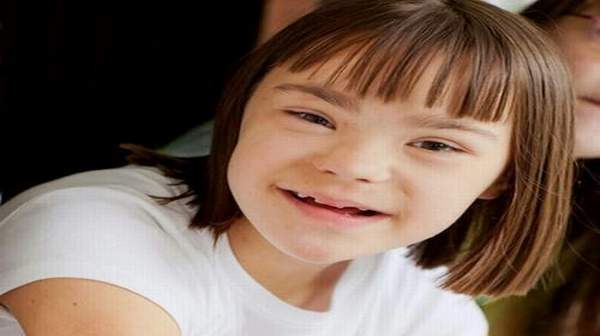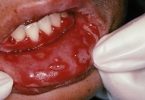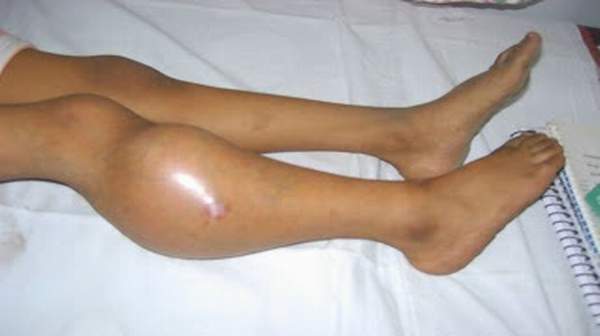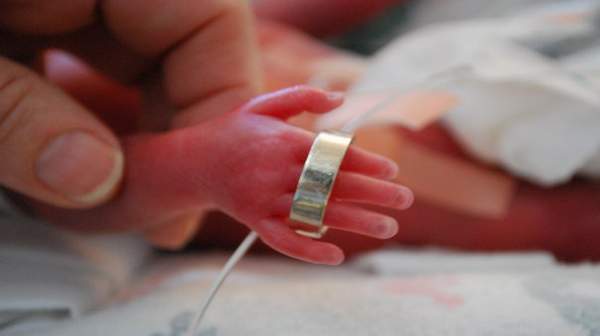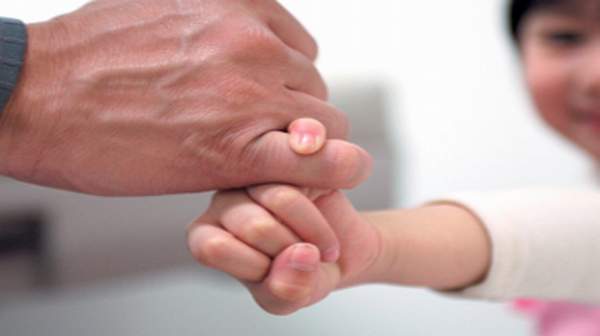Down syndrome (DS), is a genetic condition that causes delays in physical and intellectual development. Down syndrome is a condition in which a person has an extra chromosome. Chromosomes are small “packages” of genes in the body.The average IQ of a young adult with Down syndrome is 50, equivalent to the mental age of an 8- or 9-year-old child, but this varies widely.
Down syndrome is the most common genetic chromosomal disorder and cause of learning disabilities in children.
Better understanding of Down syndrome and early interventions can greatly increase the quality of life for children and adults with this disorder and help them live fulfilling lives.
There are three types of Down syndrome
People often can’t tell the difference between each type without looking at the chromosomes because the physical features and behaviors are similar.
- Trisomy 21: About 95% of people with Down syndrome have Trisomy 21.2 With this type of Down syndrome, each cell in the body has 3 separate copies of chromosome 21 instead of the usual 2 copies.
- Translocation Down syndrome: This type accounts for a small percentage of people with Down syndrome (about 3%).2 This occurs when an extra part or a whole extra chromosome 21 is present, but it is attached or “trans-located” to a different chromosome rather than being a separate chromosome 21.
- Mosaic Down syndrome: This type affects about 2% of the people with Down syndrome.2 Mosaic means mixture or combination. For children with mosaic Down syndrome, some of their cells have 3 copies of chromosome 21, but other cells have the typical two copies of chromosome 21. Children with mosaic Down syndrome may have the same features as other children with Down syndrome. However, they may have fewer features of the condition due to the presence of some (or many) cells with a typical number of chromosomes.
Most cases of Down syndrome are not inherited. When the condition is caused by trisomy 21, the chromosomal abnormality occurs as a random event during the formation of reproductive cells in a parent. The abnormality usually occurs in egg cells, but it occasionally occurs in sperm cells. An error in cell division called nondisjunction results in a reproductive cell with an abnormal number of chromosomes. For example, an egg or sperm cell may gain an extra copy of chromosome 21. If one of these atypical reproductive cells contributes to the genetic makeup of a child, the child will have an extra chromosome 21 in each of the body’s cells.
People with translocation Down syndrome can inherit the condition from an unaffected parent. The parent carries a rearrangement of genetic material between chromosome 21 and another chromosome. This rearrangement is called a balanced translocation. No genetic material is gained or lost in a balanced translocation, so these chromosomal changes usually do not cause any health problems. However, as this translocation is passed to the next generation, it can become unbalanced. People who inherit an unbalanced translocation involving chromosome 21 may have extra genetic material from chromosome 21, which causes Down syndrome.
Like trisomy 21, mosaic Down syndrome is not inherited. It occurs as a random event during cell division early in fetal development. As a result, some of the body’s cells have the usual two copies of chromosome 21, and other cells have three copies of this chromosome.
Causes
Normally, at the time of conception a baby inherits genetic information from its parents in the form of 46 chromosomes: 23 from the mother and 23 from the father. In most cases of Down syndrome, a child gets an extra chromosome 21 for a total of 47 chromosomes instead of 46. It’s this extra genetic material that causes the physical features and developmental delays associated with DS. One factor that increases the risk for having a baby with Down syndrome is the mother’s age. Women who are 35 years or older when they become pregnant are more likely to have a pregnancy affected by Down syndrome than women who become pregnant at a younger age. However, the majority of babies with Down syndrome are born to mothers less than 35 years old, because there are many more births among younger women.
Symptoms
Each person with Down syndrome is an individual intellectual and developmental problems range from mild to moderate, and some people are healthy while others have severe health problems such as serious heart defects.
Children with Down syndrome have a distinct facial appearance. Though not all children with Down syndrome have the same features, some of the more common features are:
- Flattened facial features
- Small head
- Short neck
- Protruding tongue
- Upward slanting eyes, unusual for the child’s ethnic group
- Unusually shaped or small ears
- Poor muscle tone
- Broad, short hands with a single crease in the palm
- Relatively short fingers and small hands and feet
- Excessive flexibility
- Tiny white spots on the colored part (iris) of the eye called Brushfield spots
- Short height
Infants with Down syndrome may be average size, but typically they grow slowly and remain shorter than other children the same age. In general, developmental milestones, such as sitting and crawling, occur at about twice the age of children without impairment.
Diagnosis
Doctors can diagnose Down syndrome during pregnancy or after the baby is born. Some families want to know during pregnancy whether their baby has Down syndrome. Diagnosis of Down syndrome during pregnancy can allow parents and families to prepare for their baby’s special needs.
During pregnancy
There are two basic types of tests available to detect Down syndrome during pregnancy.
- Screening tests are one type and diagnostic tests are another type. A screening test can tell a woman and her healthcare provider whether her pregnancy has a lower or higher chance of having Down syndrome. So screening tests help decide whether a diagnostic test might be needed. Screening tests do not provide an absolute diagnosis, but they are safer for the mother and the baby.
- Diagnostic tests can typically detect whether or not a baby will have Down syndrome, but they can be more risky for the mother and baby. Neither screening nor diagnostic tests can predict the full impact of Down syndrome on a baby; no one can predict this.
Screening tests
Screening tests often include a combination of a blood test, which measures the amount of various substances in the mother’s blood (e.g., MS-AFP, Triple Screen, Quad-screen), and an ultrasound, which creates a picture of the baby. During an ultrasound, one of the things the technician looks at is the fluid behind the baby’s neck. Extra fluid in this region could indicate a genetic problem. These screening tests can help determine the baby’s risk of Down syndrome. Rarely, screening tests can give an abnormal result even when there is nothing wrong with the baby. Sometimes, the test results are normal and yet they miss a problem that does exist.
A new test available since 2010 for certain chromosome problems, including Down syndrome, screens the mother’s blood to detect small pieces of the developing baby’s DNA that are circulating in the mother’s blood. This test is recommended for women who are more likely to have a pregnancy affected by Down syndrome. The test is typically completed during the first trimester (first 3 months of pregnancy) and it is becoming more widely available.
Diagnostic Tests
Diagnostic tests are usually performed after a positive screening test in order to confirm a Down syndrome diagnosis. Types of diagnostic tests include:
- Chorionic villus sampling (CVS) examines material from the placenta
- Amniocentesis examines the amniotic fluid (the fluid from the sac surrounding the baby)
- Percutaneous umbilical blood sampling (PUBS) examines blood from the umbilical cord
- These tests look for changes in the chromosomes that would indicate a Down syndrome diagnosis.
After Birth
Once a baby is born, a doctor will examine the baby and most likely will be able to diagnose a baby with Down syndrome. Doctors usually order tests of the baby’s blood to confirm whether there is an extra chromosome (chromosome 21) in the baby’s cells.
Because almost half of babies born with Down syndrome have a heart defect, all newborns with Down syndrome should receive an echocardiogram (an ultrasound picture of the heart).
Other Health Problems Among Children With Down syndrome
Many people with Down syndrome have the common facial features and no other major birth defects. However, some people with Down syndrome might have one or more major birth defects or other medical problems. Some of the more common health problems among children with Down syndrome are listed below:
- Hearing loss (up to 75% of people with Down syndrome may be affected)
- Obstructive sleep apnea, which is a condition where the person’s breathing temporarily stops while asleep (between 50 -75%)
- Ear infections (between 50 -70%)
- Eye diseases (up to 60%), like cataracts and eye issues requiring glasses
- Heart defects present at birth (50%)
Other less common health problems among people with Down syndrome include:
- Intestinal blockage at birth requiring surgery
- Hip dislocation
- Thyroid disease
- Anemia (red blood cells can’t carry enough oxygen to the body) and iron deficiency (anemia where the red blood cells don’t have enough iron)
- Leukemia in infancy or early childhood
- Hirschsprung disease
- Health care providers routinely monitor children with Down syndrome for these conditions. If they are diagnosed, treatment is offered.
Early intervention for infants and children with Down syndrome can make a major difference in realizing their potential abilities and in their quality of life.
Early intervention programs
Ask your health care provider about early intervention programs in your area. Available in most states, these special programs offer children with Down syndrome stimulation at an early age with appropriate sensory, motor and cognitive activities.
Programs may vary, but they usually involve therapists and special educators whose goal is to help your baby develop motor skills, language, social skills and self-help skills.
Team care
If your child has Down syndrome, you’ll likely rely on a team of specialists that, depending on your child’s particular needs, will provide your child’s medical care and help him or her develop skills as fully as possible. Your team may include some of these experts:
- Primary care pediatrician to coordinate and provide routine childhood care
- Pediatric cardiologist
- Pediatric gastroenterologist
- Pediatric endocrinologist
- Developmental pediatrician
- Pediatric neurologist
- Pediatric ear, nose and throat (ENT) specialist
- Pediatric eye doctor (ophthalmologist)
- Audiologist
- Physical therapist
- Speech pathologist
- Occupational therapist
Down syndrome is a lifelong condition. Services early in life will often help babies and children with Down syndrome to improve their physical and intellectual abilities. Most of these services focus on helping children with Down syndrome develop to their full potential. These services include speech, occupational, and physical therapy, and they are typically offered through early intervention programs in each state. Children with Down syndrome may also need extra help or attention in school, although many children are included in regular classes.
Many people with Down syndrome lead productive and fulfilling lives well into adulthood. They can have jobs and live independently. However, it is important for people with Down syndrome to be involved in their community, take good care of themselves, and see a healthcare provider regularly. Families of people with Down syndrome often can help their loved ones by connecting with other families that have had children with Down syndrome. This may help families gain insight into overcoming potential differences in caring for their child with Down syndrome.

